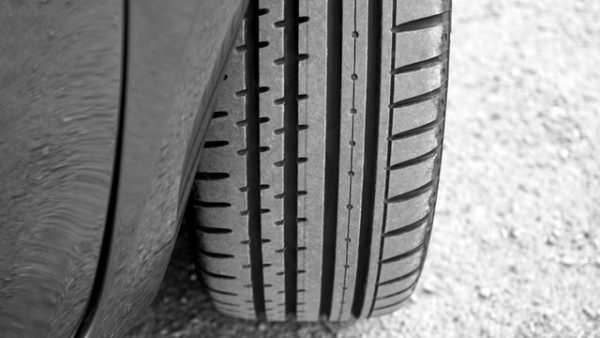Consider this: getting a spoon stuck in your tires is more of a likelihood than you may have thought.
According to a new national survey of auto service professionals, this common kitchen utensil is a potential hazard – albeit one of the more unusual ones – likely to damage your tires if you’re not careful about where you’re driving. The four tires on your car are the only thing connecting your vehicle to the road, and they also affect everything from handling to braking, playing a critical role in your safety. Given their part in keeping you safe, it’s worth taking the time to take care of your tires – especially when there are so many (potential) hazards to look out for.
The study from Cooper Tires conducted by Auto Service Professional magazine couldn’t come at a better time: Nearly 100 million Americans are expected to have taken a family vacation by year’s end, according to a recent AAA Travel survey, with upcoming spring and summer road trips topping many of their plans.
With so many Americans on the road all year long – whether for a family vacation or their daily commute to work – tire damage is an unfortunate reality. According to the study, some of the most common causes of tire damage are running over something, such as a curb (72 percent), nails (70 percent), or potholes (39 percent). Other common causes of tire damage are more easily preventable, such as driving with bald tires (48 percent) and driving on a tire with low air pressure (44 percent). It’s probably why checking tire pressure, rotating your tires and paying attention to the Tire Pressure Monitoring System (TPMS) light are the top tips from auto service professionals on proper tire maintenance.
And the one location you probably most want to avoid when driving? Construction zones, which are no doubt behind so many tires being punctured by spikes, wrenches, screwdrivers and pliers.
Drivers need to contend with various road challenges throughout the year. In the winter, the top two sources of tire damage are potholes (72 percent) and unseen hazards hidden under that fresh blanket of snow (59 percent), which can be anything from cracks in the pavement to debris that has fallen off trucks. In summer, underinflated tires are the most common offender (88 percent), leading to overheating.
“The four tires on your vehicle are the only parts to come in contact with and keep you connected to the road,” notes Jess Egerton, director of brand development at Cooper Tires which has been making tires since 1914. “That’s why, for safety and performance reasons, you have to properly care for, maintain and inspect them.”
That means:
- Checking tire inflation on a regular basis. Operating a vehicle with even just one tire underinflated by 8 psi can reduce the life of a tire by 9,000 miles and increase fuel consumption by 4 percent.
- Replacing tires when worn to 2/32 inches tread depth anywhere on the tread face.
- Visually checking tires for things such as missing valve caps, uneven tread wear and any foreign objects that could mean serious problems should they become even more deeply embedded while driving.
But back to those more unusual hazards.
Pieces of toys. Porcupine quills. Pork chop bones. Spoons. It’s anyone’s guess – including the service professionals who recounted finding them jabbed in tires – how they got there.
“Auto service professionals have pulled a lot of unusual things out of tires over the years,” says Greg Smith, publisher of Auto Service Professional magazine. “But, really, it might surprise people to know that a lot of tire damage is simply due to poor maintenance and wear and tear.”




